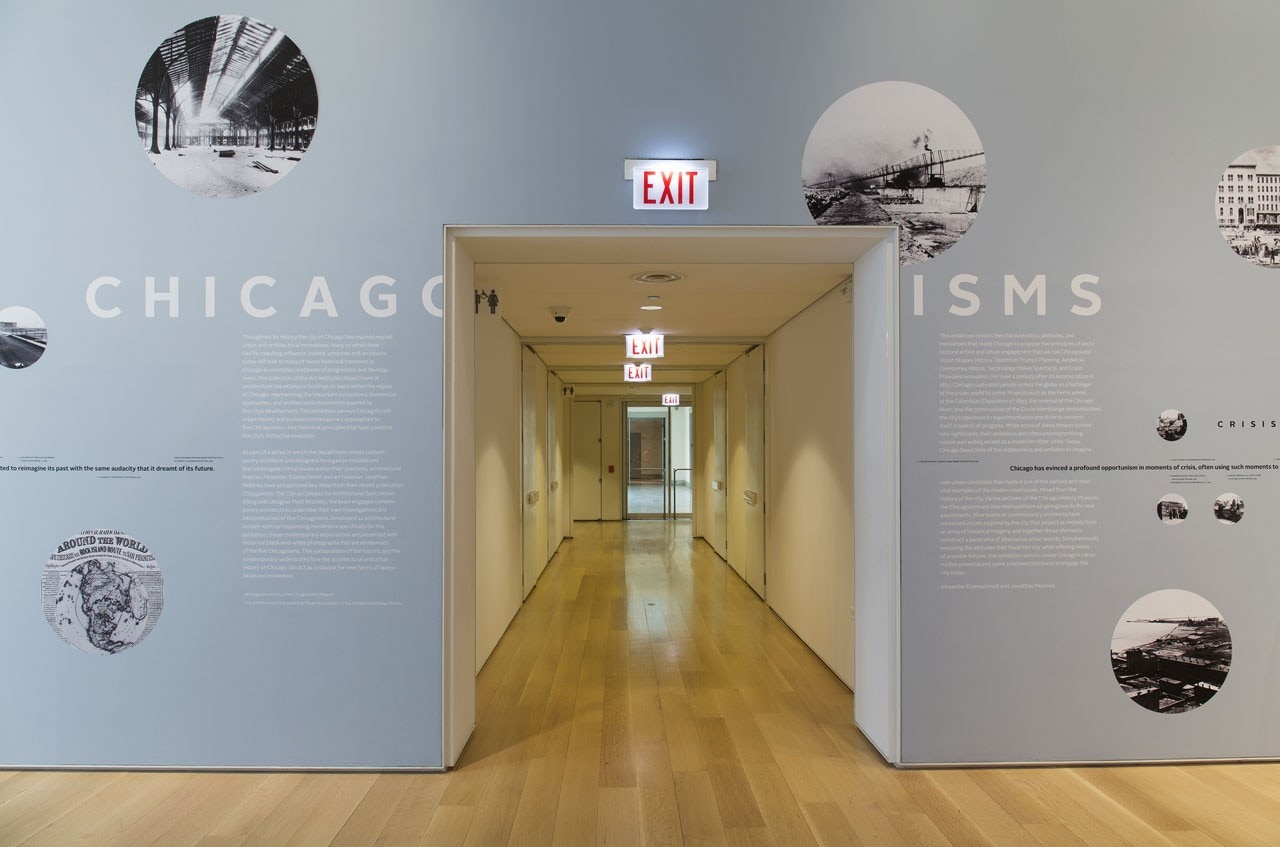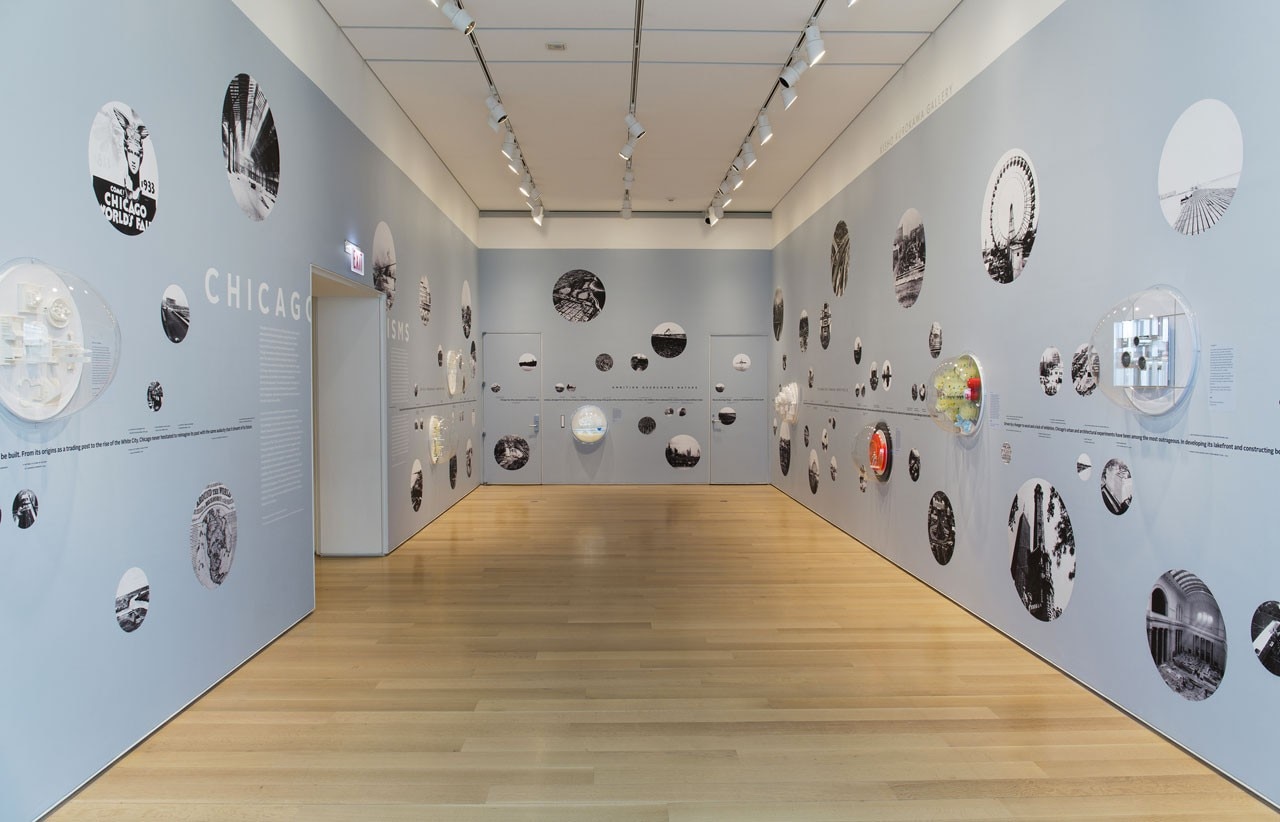
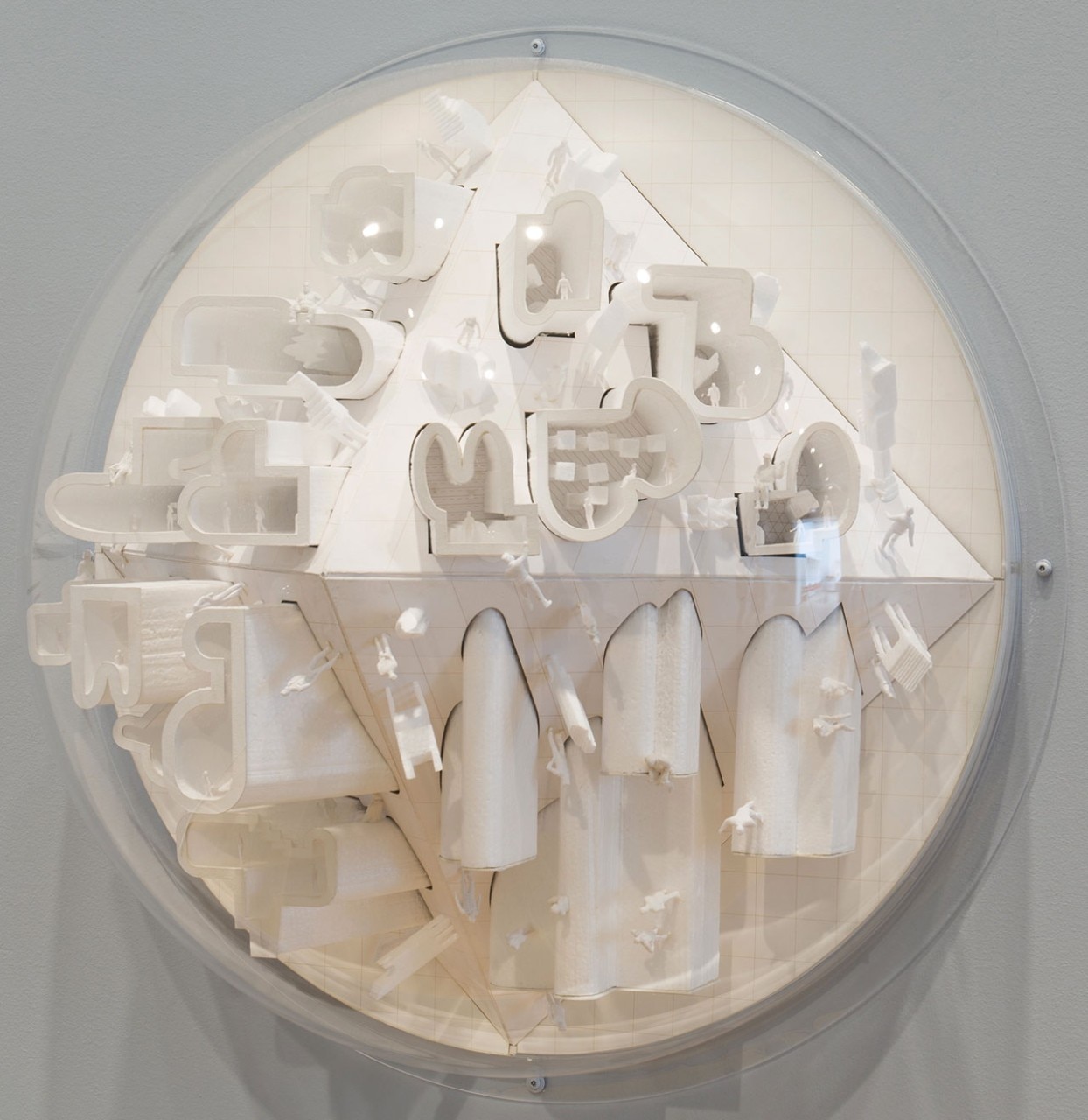
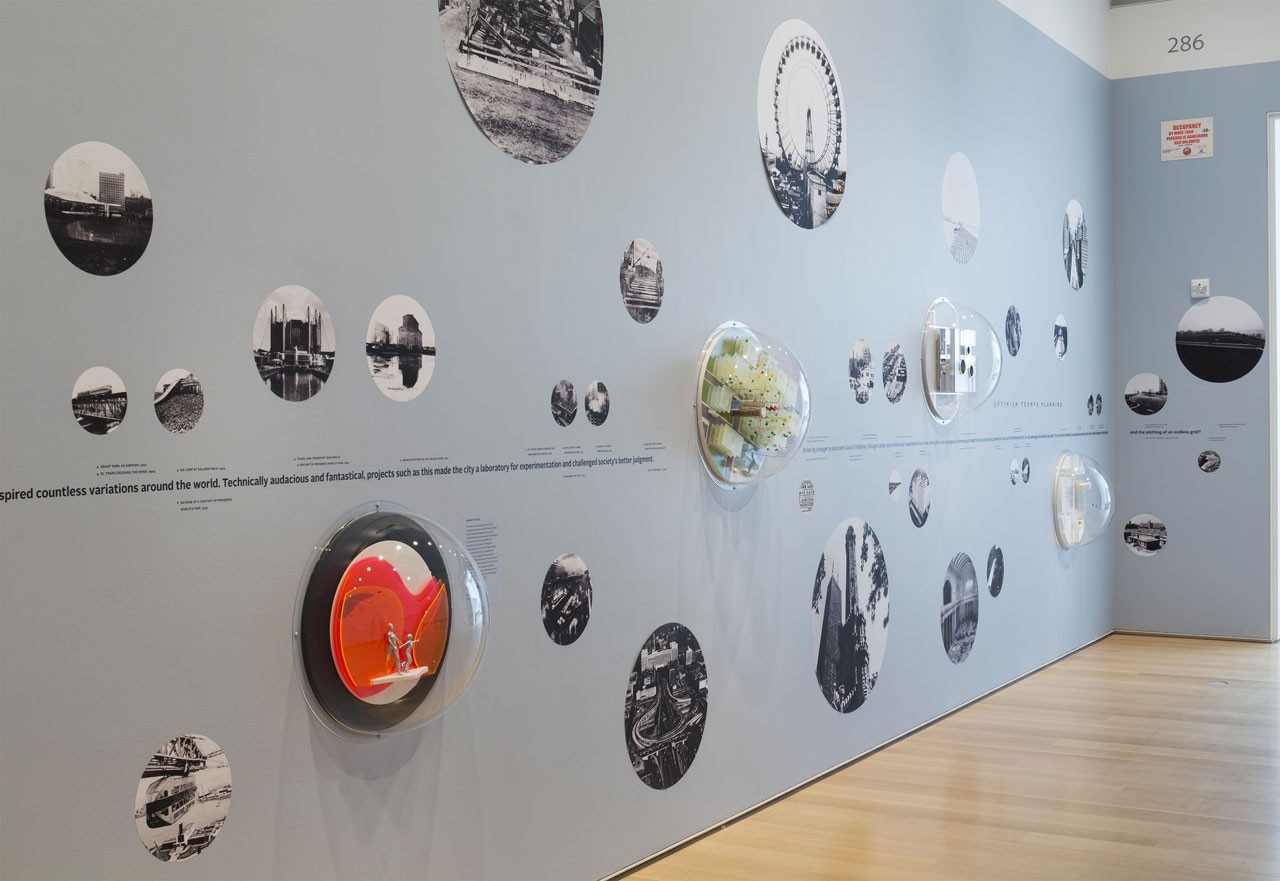
Eisenschmidt and Mekinda selected nine architectural firms and asked them to present their own “speculation” on the city of Chicago, to be presented only with one model, accompanied by a brief text.
Taken as one, the responses from the architects produce what could not be farther from a unitary and shared proposal for the city, although they do reveal a heterogeneous feeling of nostalgia.
There is nostalgia for the great technological enterprises – which do not hide the society of spectacle – in the proposal for a new Roman aqueduct, intended as a city boundary, a place of civic significance, a living space and a means to preserve water, in the UrbanLab Great Lakes Aqueduct project. There is nostalgia for a non-simplistic approach to the grid; on the one hand, this echoes the times when no one hesitated to say that the architect creates objects (as reiterated by WW in their proposal to reconsider the urban block as an object); on the other, it contrasts the mathematics of the urban plan as an absolute fact with the architect’s persistent reaction, turning fact into invention in the Bureau Spectacular proposal. There is nostalgia for the city that has never been or rather that has been without realising it wanted to be: that put forward by Ludwig Hilberseimer as a different relationship between work and living spaces, between “private” spaces and “public” spaces which degenerated into the “megalopolis is everywhere”, as discussed by Albert Pope in his written piece on the book. Dogma took the argument proposed by Eisenschmidt and Mekinda that “crisis provokes innovation” and considered the recession an opportunity to introduce discontinuity into the status quo. This is how it interprets and re-proposes Hilberseimer’s idea for Marquette Park, without lapsing into the usual two-way rhetoric that counters “urban” with “suburban” and still seems to engulf ORG-Organization for Permanent Modernity’s proposal to acculturate suburban types by constructing an urban model with suburban rules.
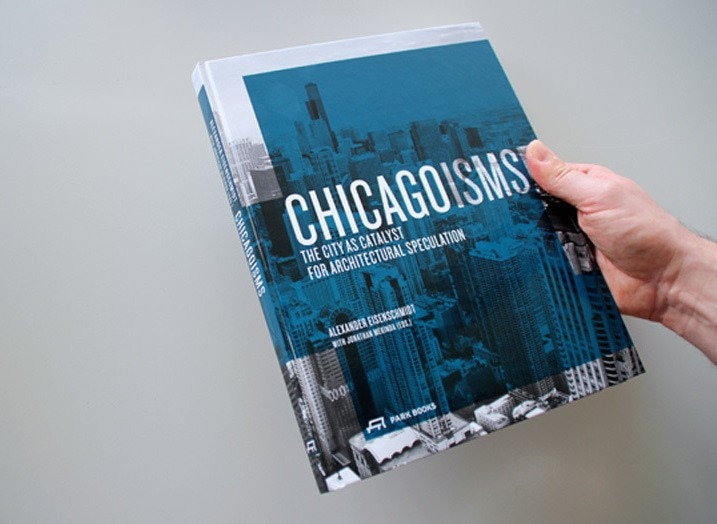
At the extreme reached by the exhibition, nostalgia is expressed in speculation intended in its traditionally most heartless sense, i.e. building speculation.
untill 4 January 2015
Chicagoisms
The Art Institute of Chicago
111 South Michigan Avenue, Chicago

